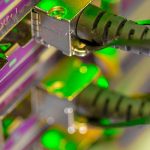Intel’s new CEO, Lip-Bu Tan, is ready to shake things up. In his first keynote at the Intel Vision conference in Las Vegas, he laid out his vision: modernizing the way Intel programs chips and leveraging AI to design and refine them.
Tan spoke about “Software 2.0,” a game-changing approach. Instead of relying solely on traditional methods, he plans to have engineers teach AI to handle complex tasks and speed up chip design—especially for AI workloads. “We’re diving deep with the engineering team to kickstart this transformation,” he said. “We’ll reimagine our portfolio and focus on AI-driven system design.”
Intel is playing catch-up in the booming AI data center chip market. Nvidia reported a staggering $115.2 billion in data center revenue last fiscal year, while Intel’s total revenue was just $53.1 billion. AMD, although a distant second to Nvidia, has gained significant ground in AI GPUs, surpassing Intel’s market cap.
To pivot toward AI, Tan is prepared to shed non-core assets. The company is considering an IPO or sale of its programmable chip unit, Altera, purchased in 2015 for $16.7 billion.
Tan aims to restore Intel’s legacy as a design and manufacturing powerhouse. “Under my leadership, Intel will be an engineering-focused company,” he emphasized, noting the need to attract top engineering talent to drive growth and innovation. He envisions a shift from Intel’s conservative culture to an environment reminiscent of a “day-one startup,” where engineers feel free to explore new ideas. Tan’s frustration with the previous culture under Pat Gelsinger, which he felt stifled creativity, led to his resignation from the board in 2024.
Rebuilding Intel’s foundry business is also on his agenda. Tan plans to draw on his experience leading Cadence Design Systems to meet high standards in manufacturing. As the sole U.S. company that designs and manufactures chips, Tan recognizes Intel’s crucial role in revitalizing American chip production.
Intel has already received about $7.86 billion from the 2022 CHIPS and Science Act, which allocates $52.7 billion for semiconductor manufacturing and research over the next several years. Tan expressed his eagerness to collaborate with the current administration to boost domestic chip-making.
He’s passionate about turning Intel around, stating, “I love this company, and it’s hard to watch it struggle.” He’s fully aware of the challenges ahead but is committed to making an impact.








